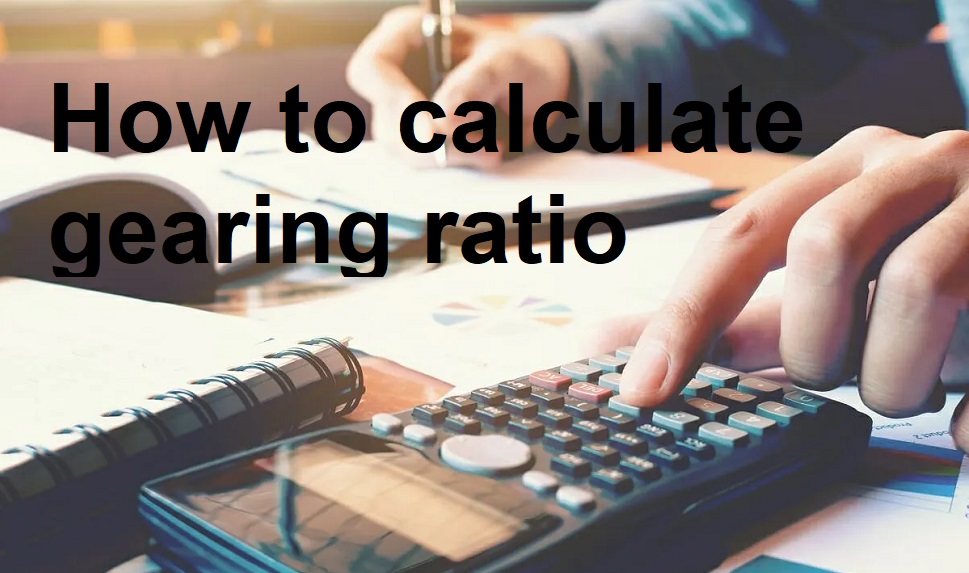
In contrast, a company with a low debt to equity ratio is generally considered to be financially more sound. Now by using the gear ratio formula we looked at earlier, we can determine the get a letter from the irs in 2020 read this ratio across the gears. And that the ratio across the second gear set is 40 over 10 or 4 to 1. This information can be used to determine the ratio across the entire series of gears.
Sale of Assets Co-Op Looks to Sell Garage Forecourt Assets to Reduce Debt and Gearing
Anything above 100% indicates higher financial leverage and risk. A high gearing ratio can be a blessing or a curse—depending on the company and industry. Having a high gearing ratio means that a company is using more debt to fund its operations, which may increase the financial risk.
Would you prefer to work with a financial professional remotely or in-person?
Perhaps the most common method to calculate the gearing ratio of a business is by using the debt to equity measure. Simply put, it is the business’s debt divided by company equity. Gearing ratios are financial metrics that compare a company’s debt to some form of its capital or equity.
- A high gearing ratio typically indicates a high degree of leverage but this doesn’t always indicate that a company is in poor financial condition.
- Keep on reading to learn more about gear ratio calculation and how it is essential in making simple machines (and even complicated ones).
- Perhaps the most common method to calculate the gearing ratio of a business is by using the debt to equity measure.
- Below 25%, on the other hand, a company may not be able to take advantage of expansion opportunities when interest rates are low.
What is a return on equity?

We can also call it the driving gear since it initiates the movement of all the other gears in the gear train. The final gear that the input gear influences is known as the output gear. In a two-gear system, we can call these gears the driving gear and the driven gear, respectively. Keep on reading to learn more about gear ratio calculation and how it is essential in making simple machines (and even complicated ones).
Gearing vs. Risk
Specialties include general financial planning, career development, lending, retirement, tax preparation, and credit. IG accepts no responsibility for any use that may be made of these comments and for any consequences that result. We will first calculate the total interest and EBIT of the company and then use the above equation. If you have more questions about financial formulas and concepts, visit our resource hub! Ask a question about your financial situation providing as much detail as possible. Your information is kept secure and not shared unless you specify.
How Much Gearing Is Appropriate for a Company?
A mature business which produces strong and reliable cash flows can handle a much higher level of gearing than a business where the cash flows are unpredictable and uncertain. A gearing ratio of 0.5, or 50%, indicates that the company’s finances debt is half of the company’s equity. It’s important to compare the net gearing ratios of competing companies—that is, companies that operate within the same industry. That’s because each industry has its own capital needs and relies on different growth rates.
He assumes the role of CEO and his job is to help the team get their job done. Vineet drives the growth strategy and its execution through product innovation, product marketing and brand building. He is dedicated to building high performance teams and enjoys being actively involved in problem solving for business growth. Vineet, an IIM Indore Alumnus is also a Chartered Accountant and his interests include digital marketing, blogging on recreational mathematics, travelling and has a passion for teaching. When not at work, he loves spending time with his two lovely sons Arham & Vihaan and his wife Preeti.
The amount of debt that a business can take on without endangering it is determined in part by gearing ratios. Tax deductions for debt interest can reduce an organization’s after-tax profits and tax liability. Gearing shows the extent to which a firm’s operations are funded by lenders vs. shareholders—in other words, it measures a company’s financial leverage. When the proportion of debt-to-equity is great, then a business may be thought of as being highly geared, or highly leveraged. Financial analysts commonly use the gearing ratio to understand the company’s overall capital structure by dividing total debt into total equity. Thus, hindering growth is more of a hindrance to the company’s development.

